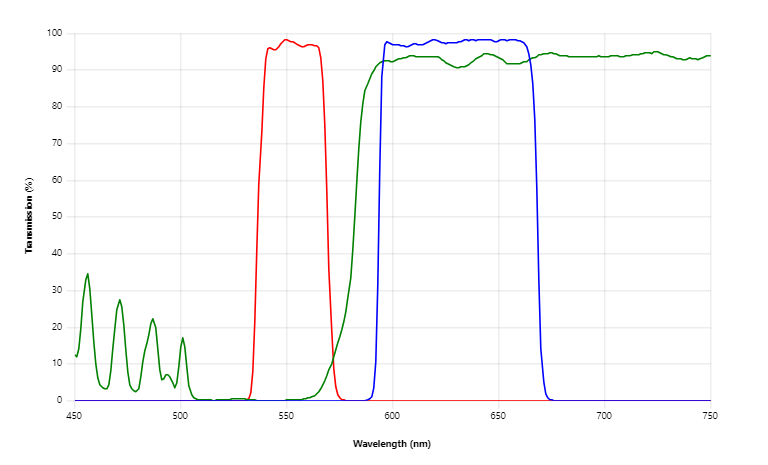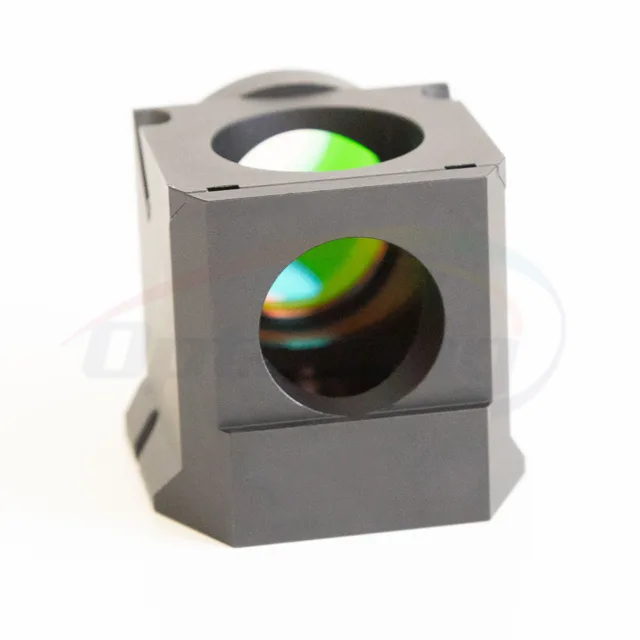Fluorescence microscopy has transformed the area of biological imaging by enabling researchers to clearly see and analyze complex cellular processes. The emission filter, a key element that is essential to improving clarity and precision, is at the core of this imaging approach. We shall examine the role of emission filters in fluorescence microscopy, how they work, and how they affect the caliber of the images that are obtained in this article.
Unveiling the World of Fluorescence Microscopy
Researchers may now view and comprehend cells’ and biomolecules’ behavior in ways that were previously impossible thanks to the development of fluorescence microscopy. This imaging technology makes precise observation of cellular architecture, protein dynamics, and gene expression possible by taking advantage of the special qualities of fluorescent molecules.
The Role of Emission Filters in Fluorescence Microscopy
Fluorescence microscopy systems must have emission filters because they are essential for isolating the fluorescence signal from the excitation light. They successfully separate the specimen’s fluorescence from the excitation light, improving image contrast and clarity.
Understanding Emission Filters: Composition and Function
Optical devices called emission filters selectively transmit light only within a certain range of wavelengths. They typically comprise of several layers of dielectric coatings that are intended to transmit the required emission wavelengths while reflecting undesired wavelengths. These filters increase the signal-to-noise ratio and boost image quality by effectively blocking the excitation light and allowing only the emitted fluorescence to pass through.

Selecting the Right Emission Filter: Factors to Consider
For fluorescence microscopy to produce precise and dependable results, the right emission filter must be used. The excitation wavelength, fluorophore properties, intended emission range, and filter compatibility with the microscope system are a few things that need to be taken into account. The best performance is guaranteed, and background noise and spectral bleed-through are reduced through careful selection.
Optimizing Image Quality: Emission Filters and Background Noise
Fluorescence microscopy images can be dramatically impacted by background noise. By permitting just the desired fluorescence emission to pass through to the detector, emission filters play a crucial part in decreasing this noise. These filters increase image quality and the overall signal-to-noise ratio by reducing the detection of stray light and out-of-focus fluorescence.
Specialized Emission Filters for Multiplexing and Colocalization Studies
Researchers frequently attempt to simultaneously visualize several objects in complex biological systems. The detection and separation of various fluorescent probes with diverse emission spectra are made possible by specialized emission filters, also referred to as multiband or dichroic mirrors. These filters make multiplexing and colocalization experiments possible, revealing important details about cellular dynamics and molecular interactions.
Maintaining and Caring for Emission Filters
For emission filters used in fluorescence microscopy to last and work well, proper maintenance and care are necessary. Here are some key principles to remember:
Handle with care: Optically fragile emission filters are a common sight. Use caution when putting them in or taking them out of the microscope to prevent injuring the filter surface.
Clean gently: To keep the filter from accumulating dust and other impurities, it must be cleaned frequently. Wipe the surface with a gentle, lint-free cloth or lens tissue. Do not use solvents or abrasive items that might harm the surface.
Store properly: Emission filters should be kept clean and dry while not in use, preferably in containers or cases that will protect them from dust accumulation and possible damage.
Advancements in Emission Filter Technology
The performance and adaptability of emission filter design have improved as a result of ongoing technological breakthroughs. Some significant developments include:
Narrower spectral bandwidth: Modern emission filters have smaller spectral bandwidths, which improve fluorophores’ ability to be separated from one another and reduce spectral bleed-through.
High transmission efficiency: Modern filters have great transmission efficiency, ensuring that the maximum amount of signal is captured while reducing light loss.
Customization options: Manufacturers now provide programmable filters that are tuned to certain experimental requirements, enabling researchers to acquire the best imaging outcomes.
Future Directions: Emerging Trends in Emission Filter Design
Several new trends that are emerging as fluorescence microscopy develops are influencing emission filter design in the future:
Multiplexing capabilities: The simultaneous detection of numerous fluorescent probes is a growing area of research. Future emission filters should offer improved multiplexing capabilities to make difficult imaging studies easier.
Improved durability: The goal of these efforts is to create emission filters that can resist extended exposure to powerful light sources and challenging imaging environments.
Integrated filter arrays: A emerging field of study is the integration of various filters into a single device. Real-time imaging of dynamic processes is made possible by integrated filter arrays’ rapid and seamless switching between several fluorescence channels.
Conclusion
Fluorescence microscopy depends on emission filters because they improve picture quality, lower background noise, and make it possible to see complex biological activities. Researchers can maximize their imaging experiments and obtain important insights into the complicated world of biology by carefully choosing, maintaining, and comprehending evolving technology.

FAQs (Frequently Asked Questions)
What is the purpose of an emission filter in fluorescence microscopy?
To improve image contrast and clarity, an emission filter selectively transmits the specimen’s fluorescence while blocking the excitation light.
How do emission filters reduce background noise in fluorescence microscopy?
Emission filters minimize the detection of stray light and out-of-focus fluorescence that contribute to background noise by selectively allowing only the intended fluorescence emission to reach the detector.
Can I use any emission filter with my microscope?
Considerations such as excitation wavelength, fluorophore properties, and desired emission range should be taken into account when choosing an emission filter that is compatible with your microscope equipment.
How should I clean and maintain my emission filters?
Utilizing a soft, lint-free cloth or lens tissue, gently clean the emission filters. When not in use, handle them with care and keep them in a dry, clean location.
What are some future advancements in emission filter technology?
The creation of integrated filter arrays enabling seamless switching between fluorescence channels, reduced spectral bandwidths, increased transmission efficiency, enhanced durability, and other improvements are possible in the future.
Finally, emission filters play a crucial role in fluorescence microscopy and have a big impact on the sharpness and quality of the images. Fluorescence microscopy has a lot of promise, but it can be fully utilized by researchers to explore the fascinating world of cellular processes and biomolecular interactions by comprehending how they work, choosing the appropriate filters, and embracing future developments.
